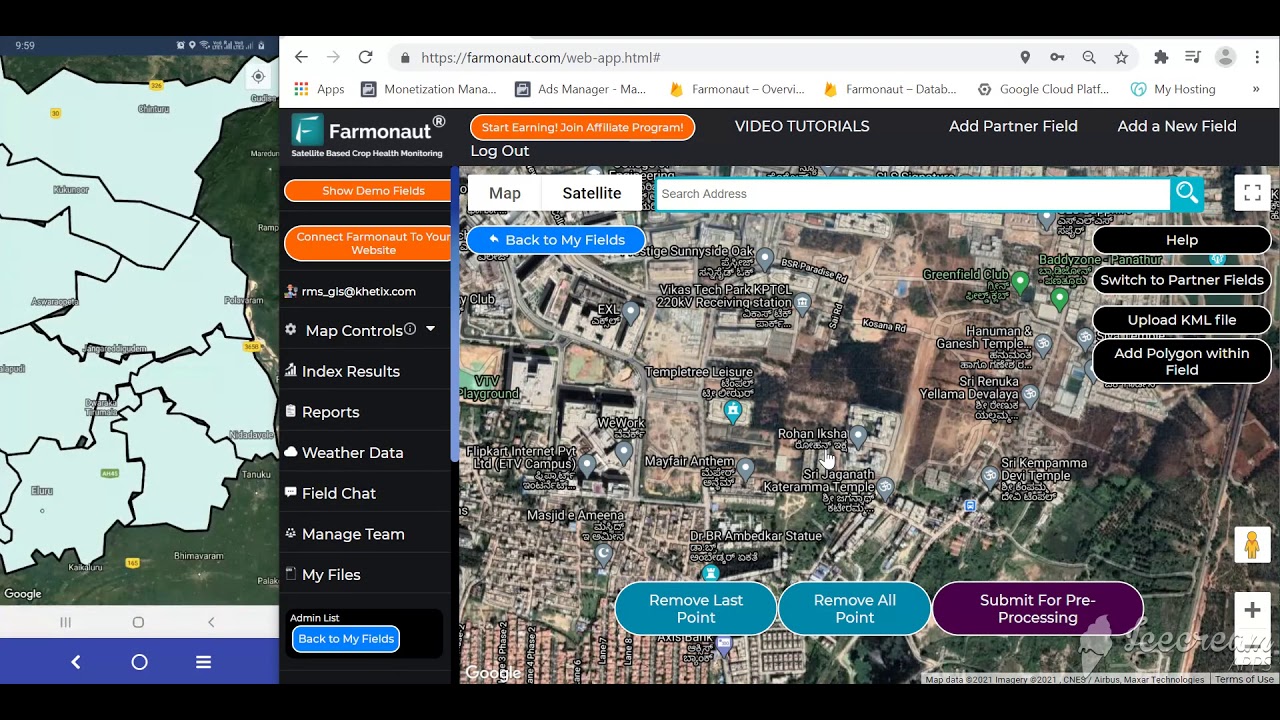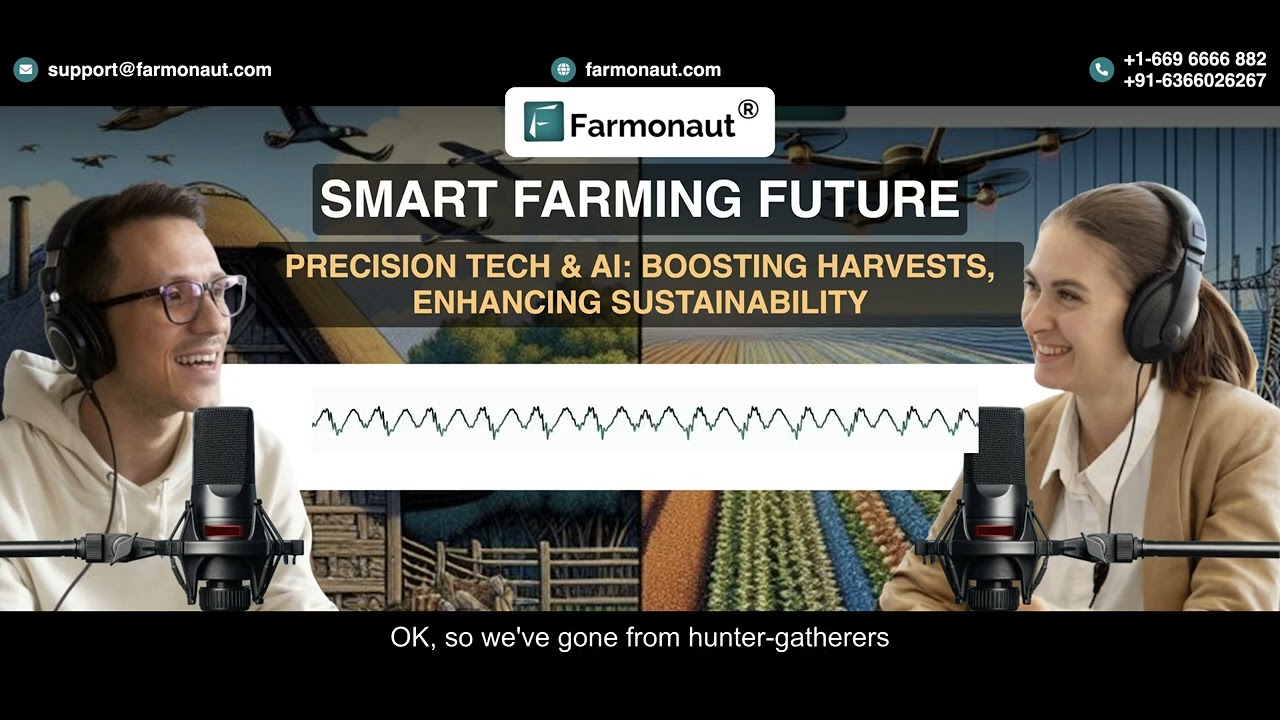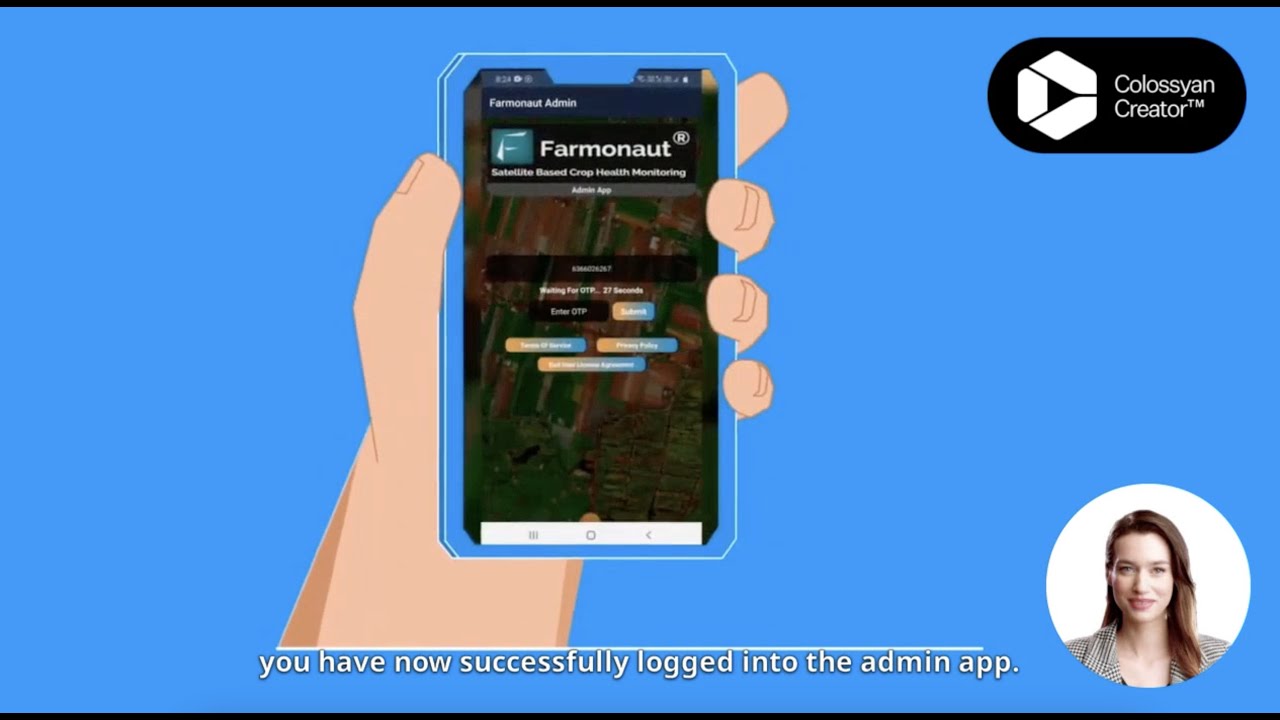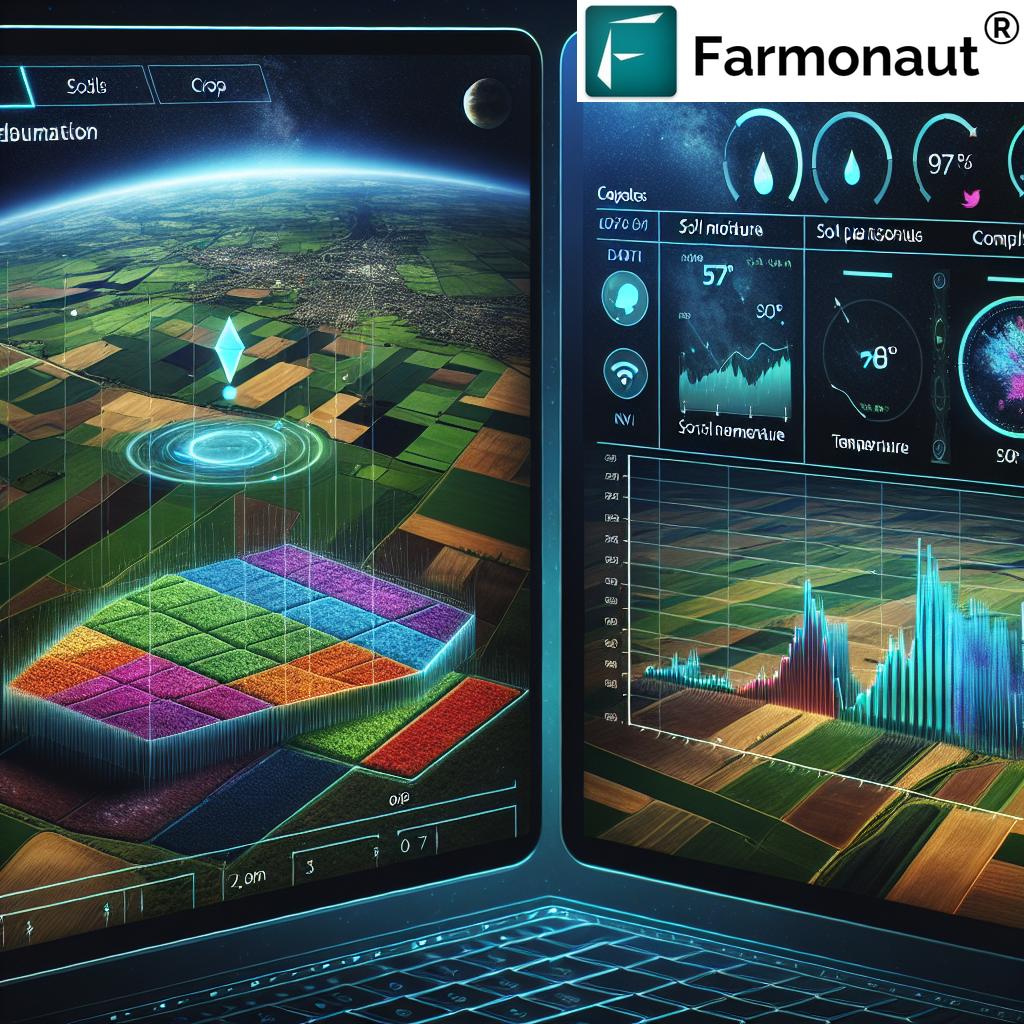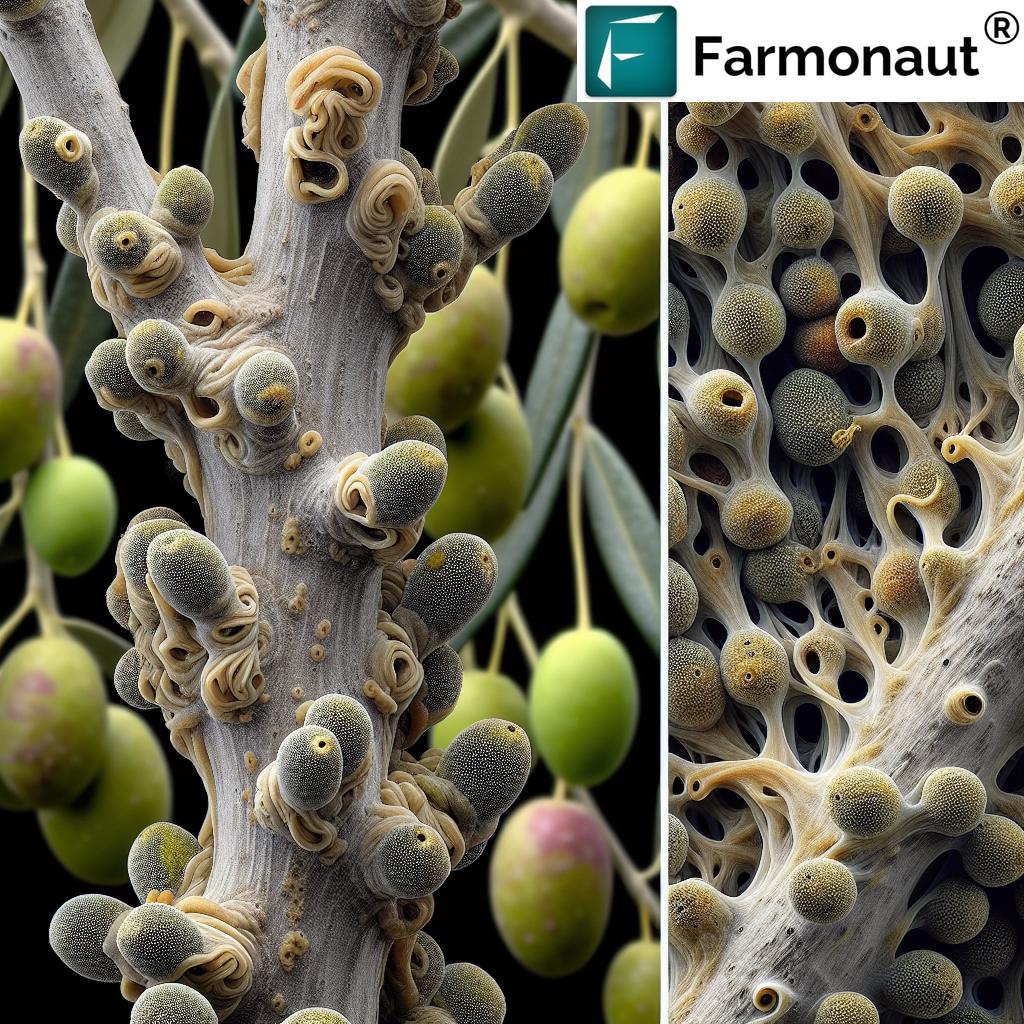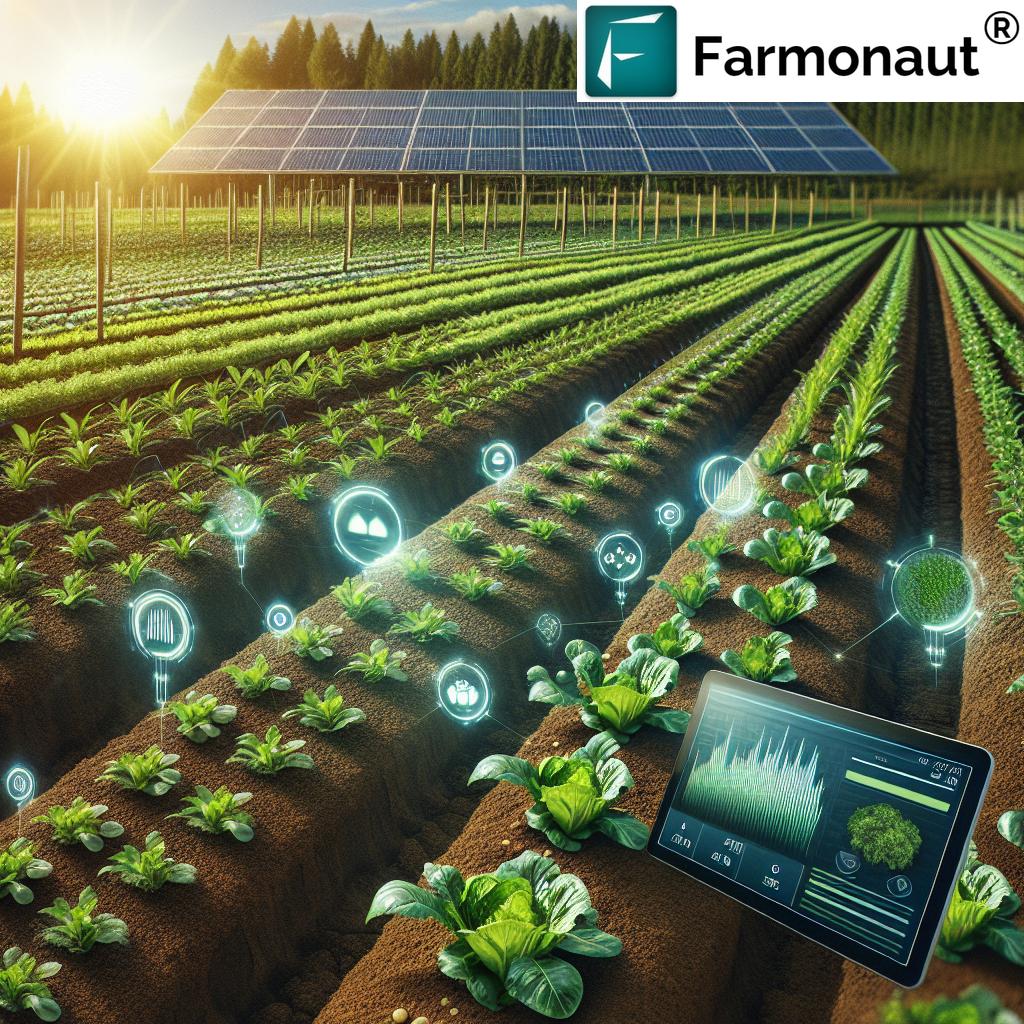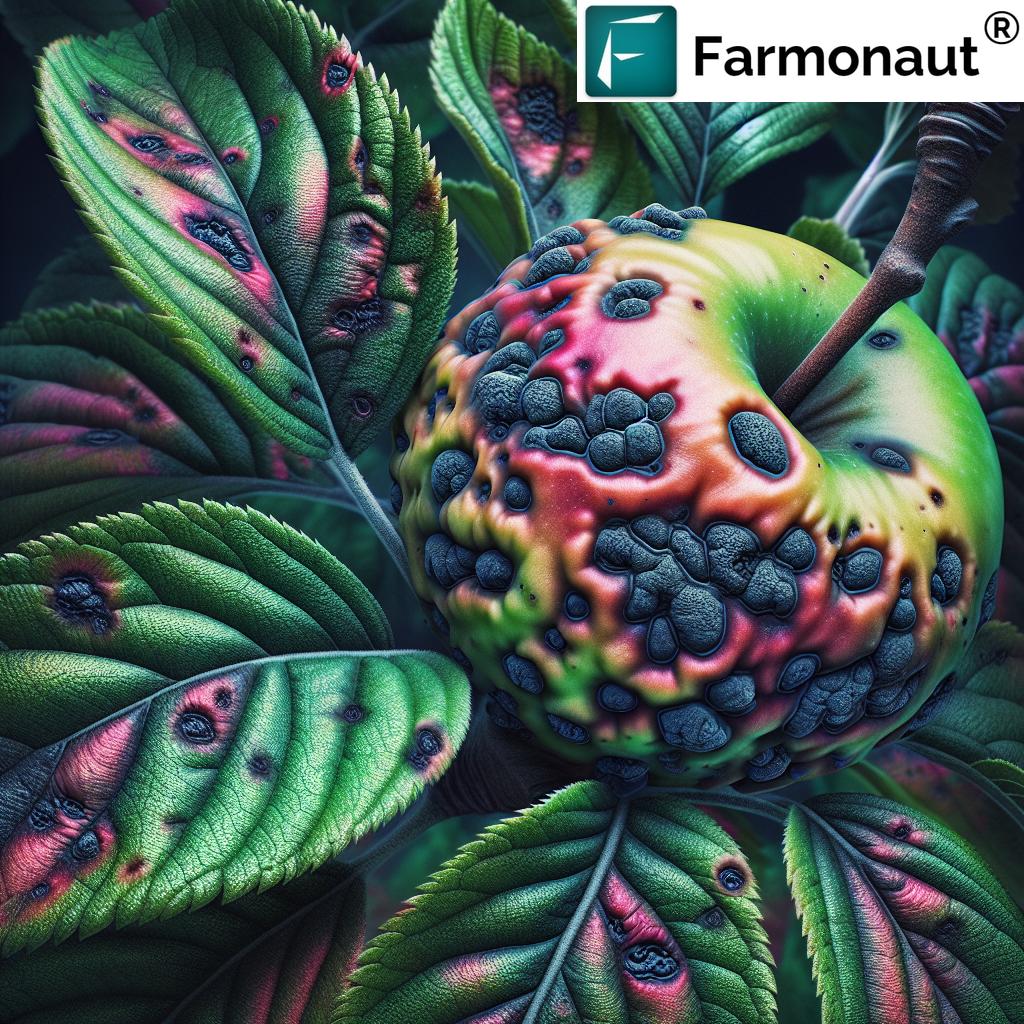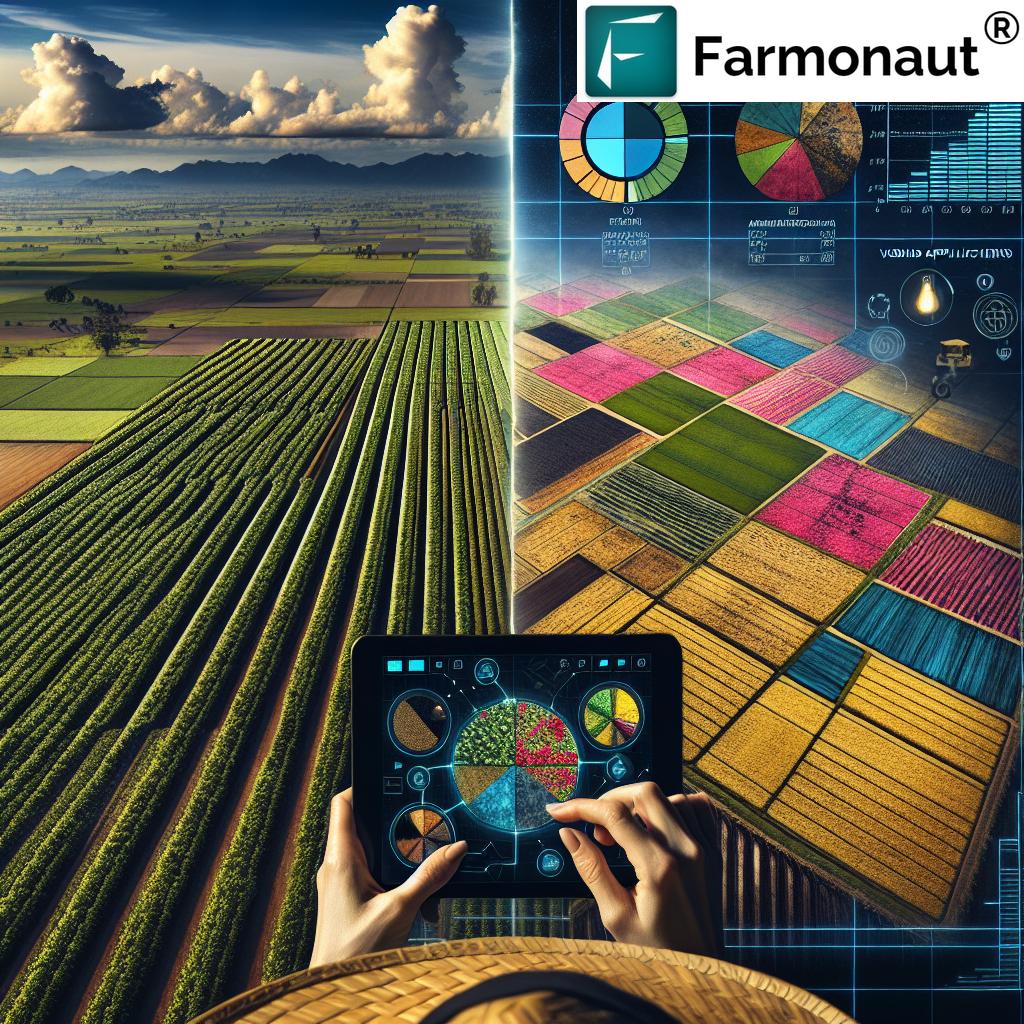Agriculture Drone Sprayer for Sale: 7 Top Benefits 2025
- Introduction to Agriculture Drone Spraying in 2025
- Did You Know? Drone Sprayer Trivia
- How Agriculture Drone Sprayers Work
- Key Market Trends in 2025: Agriculture Drone Sprayer for Sale
- 7 Top Benefits of Agriculture Drone Spraying Acreage in 2025
- 1. Increased Coverage & Efficiency
- 2. Precision Application and Reduced Chemical Use
- 3. Labor Cost Reduction and Safety
- 4. Flexible Acreage Management
- 5. Environmental Benefits and Sustainability
- 6. Enhanced Data Integration and Smart Farm Management
- 7. Empowering Scalable & Affordable Farming Practices
- Benefit Impact Table: Drone vs Traditional Spraying (2025)
- Satellite & AI-Driven Insights: Farmonaut’s Role in Smart Spraying
- Trivia: Automatic Sprayer Sustainability Fact
- Automatic Agriculture Sprayer vs Manual: A 2025 Perspective
- The Future of Productivity and Sustainability in Spraying Technologies
- FAQ: Agriculture Drone Sprayer for Sale & Usage
- Farmonaut Subscription Options
- Conclusion
Introduction to Agriculture Drone Spraying in 2025
Over the recent years, the agriculture sector has undergone a remarkable transformation powered by advanced technologies. Among the critical innovations that have emerged, agriculture drone spraying acreage management ranks at the forefront—propelling farming into a new era of efficiency, productivity, and sustainability. As we move into 2025, it has become a mainstream method for crop protection and input application, offering significant advantages over traditional techniques.
Agriculture drone sprayers are advanced unmanned aerial vehicles (UAVs) designed specifically to carry liquid tanks and dispensing systems for accurate and automated spraying of fertilizers, pesticides, and herbicides across large fields. These machines navigate difficult terrains and cover areas that would otherwise challenge tractor-mounted or manual backpack sprayers, thereby minimizing soil compaction and crop damage while maximizing reach.
In this comprehensive blog, we’ll dissect the 7 top benefits of investing in an agriculture drone sprayer for sale in 2025, explore key market trends, analyze practical impact comparisons, and highlight how smart automation and data-driven systems are boosting sustainable farm management.
How Agriculture Drone Sprayers Work: Technology & Systems
The core of agriculture drone spraying acreage lies in the integration of robust spraying technologies with AI, smart sensors, and remote management systems. Here’s how the process typically unfolds in 2025:
- Unmanned Aerial Vehicles (UAVs): High-capacity drones designed to carry liquid tanks (10-40 liters+) and dispensing systems.
- Precise Spraying Mechanisms: Nozzles equipped with variable-rate control for precise application of chemicals, adapting flow based on realtime crop health data and sensors input.
- Flight Automation: Pre-programmed routes via GPS mapping—allowing drones to efficiently spray dozens to hundreds of acres in a single flight.
- Data-Driven Adjustment: Integration with remote farm monitoring tools for on-the-fly adjustments, optimizing application based on satellite imagery and real-world field conditions.
- Safety and Environmental Sensors: Automated features that prevent overlapping applications and reduce wastage or environmental contamination.
This new breadth of automation outperforms manual and conventional techniques—bringing exceptional accuracy and efficiency to modern farming operations.
Key Market Trends in 2025: Agriculture Drone Sprayer for Sale
With increased widespread adoption, the market in 2025 now offers several types of agriculture sprayer technologies, spanning simple manual drones to fully automatic spraying machines with integrated smart sensors and GPS flight control.
- Accessibility: Commercial models have become more affordable, making advanced drone sprayers an accessible choice for small and medium-scale farmers, not just industrial operations.
- Scalability & Capacity: Modern agriculture machine sprayer drones can efficiently cover large acreages (dozens to hundreds of acres), even over difficult terrains.
- Sustainable Input Use: Automated, precise application of pesticides, herbicides, and fertilizers reduces wastage, minimizing adverse environmental impact and cutting costs.
- Integration Ready: Many machines come fully integrated with farm management software, supporting real-time data exchange and decision making.
- Regulatory Support: Many countries are adapting regulations to streamline drone usage for agricultural spraying, making widespread adoption possible.
Agriculture drone sprayer for sale listings are now featured on specialist platforms, innovation expo events, and through dedicated suppliers—providing a broad marketplace for farmers aiming to improve yield and cutting costs.
7 Top Benefits of Agriculture Drone Spraying Acreage in 2025
The following sections detail the critical benefits of adopting automatic spraying machine and agriculture machine sprayer technologies, explaining how drones are transforming the landscape of crop management and protection.
1. Increased Coverage & Efficiency: Cover More Acreage Swiftly
- Thanks to enhancements in battery, tank capacity, and energy management, leading-edge agriculture sprayers can now cover up to 40 acres per hour—vastly surpassing manual or tractor-based spray rates.
- This efficiency is instrumental for large farms, especially during critical windows for crop protection (such as pest outbreaks or rapid disease spread).
- The scalability of these systems means farmers can easily manage peak seasons or emergencies without extra labor costs.
2. Precision Application and Reduced Chemical Use
- Advanced automatic spraying machine models adjust the amount of chemical dispensed in real-time—based on crop health data obtained from multispectral sensors or farm analytics.
- Variable-rate application ensures pesticides, herbicides, and fertilizers are only used where (and when) needed, minimizing wasted input and preventing over-application.
- The result is up to 30% savings in chemical usage, with tangible environmental benefits and cost reductions.
3. Labor Cost Reduction and Safety
- One of the significant financial benefits is the cutting of labor requirements and associated costs—no need for large ground crews to operate heavy machines or manual backpack sprayers over fields.
- Automatic spraying machines can undertake tasks autonomously, freeing up workers for higher-value activities and reducing operational risks.
- By minimizing direct human interaction with hazardous chemicals, farmer safety is greatly increased, supporting compliance with modern occupational health regulations.
4. Flexible Acreage Management: Navigate Difficult Terrains
- Unlike conventional methods, drone sprayers are designed to navigate uneven ground, steep slopes, or fragmented plots where tractors cannot reach.
- Dramatically reduces soil compaction and crop damage by flying above crops instead of rolling over them, maintaining field health.
- Enables efficient protection of orchards, vineyards, and forestry zones—areas previously under-served by ground-based spraying machines.
5. Environmental Benefits and Sustainability
- Optimized spraying techniques reduce runoff into waterways and minimize chemical drift into non-target areas, aiding compliance with evolving environmental standards.
- Reduced soil compaction helps sustain soil health, encourages microbial activity, and preserves ecosystem integrity in fields.
- Many modern agriculture machine sprayers offer water-saving features—using up to 50% less water than traditional spraying techniques.
- For those seeking greener farming practices, adopting drone technologies is critical in supporting carbon footprinting strategies and building sustainable supply chains.
6. Enhanced Data Integration and Smart Farm Management
- Automatic spraying machines integrated with farm management platforms offer real-time monitoring of application rates, areas covered, and act as sources of actionable data.
- When combined with satellite-based monitoring and AI advisory systems—such as those available through Farmonaut’s services—farmers access detailed insights on crop health, soil conditions, and pest pressure.
- These holistic systems enable smarter decision-making, optimize input usage, and enhance profitability for agricultural businesses in 2025 and beyond.
- Learn more about large-scale farm management solutions here
7. Empowering Scalable & Affordable Farming Practices
- The combination of affordable commercial models, simplified operation via smartphone or tablet apps, and API-driven analytics (see: Farmonaut API for integration) puts advanced spraying within reach for small and medium-scale operations.
- Farmers and agri-entrepreneurs can now scale up as their business grows without expensive capital upgrades or hiring external contractors for every intervention.
- Crop loan and insurance providers are starting to support drone-enabled farms through satellite-based verification—enabling better access to financing and risk management.
Benefit Impact Table: Drone vs Traditional Spraying (2025)
| Benefit | Drone Spraying (2025, est. values) | Traditional Spraying (est. values) | Impact Description |
|---|---|---|---|
| Increased Coverage Area (acres/hour) | 30–40 | 5–10 | Drone sprayers cover acreage up to 4–6× faster, essential in tight agronomic windows |
| Reduced Labor Hours (per 100 acres) | 5–8 labor hours | 40–60 labor hours | Manual tractor/backpack spraying is slow and labor-intensive; drones minimize workforce needs |
| Precision Application (chemical savings, %) | 25–30% | 0–5% | Automatic variable-rate features cut input use by focusing only on targeted areas |
| Water Usage Reduction (%) | 30–50% | — | Aerial sprayers use less water through optimized droplet size and timing |
| Yield Increase (%) | 8–15% | — | Timely, accurate coverage leads to healthier crops and higher yields |
| Operational Cost Savings (%) | 20–40% | — | Between chemical savings, lower labor, and resource efficiency, costs drop dramatically |
| Environmental Impact Rating (1–5, lower=greener) | 2 | 4 | Drones minimize drift, runoff, and compaction—helping meet sustainability goals |
Satellite & AI-Driven Insights: Farmonaut’s Role in Smart Spraying
With the rise of automation and data-driven technologies in agriculture, our team at Farmonaut is dedicated to providing advanced satellite-based monitoring and AI advisory systems to support informed decisions in crop management and spraying. We leverage a blend of satellite imagery, AI, and machine learning to empower farmers with real-time insights into vegetation health (NDVI), soil condition, and resource management.
- Our Jeevn AI Advisory System delivers actionable recommendations for field operations—improving the timing and accuracy of drone spraying interventions.
- Our blockchain-based solution enables traceability in agricultural supply chains, ensuring transparency in every application from field to market.
- Fleet and equipment management tools enable tracking of drones, sprayers, and farm machinery for efficient logistics and operational safety.
- Explore our crop, plantation, and forest advisory services—powered by remote sensing and machine learning.
Our goal is to democratize access to advanced agriculture technologies and make satellite insights a cornerstone of every modern farm management strategy.
Automatic Agriculture Sprayer vs Manual: A 2025 Perspective
The debate between manual and automatic spraying machines is now largely settled in progressive agriculture—with the smart, automated solutions driving the sector forward.
- Manual Sprayers:
- Dependent on human stamina and manual calibration.
- Prone to inconsistent coverage and potential over/under-application of chemicals.
- Unsafe exposure to hazardous chemicals for farm workers.
- Time-consuming, especially on large acreages.
- Automatic Sprayers (2025):
- Fully automated flight paths and smart dosing.
- Integrated sensors for adaptive, precision application.
- Zero direct chemical exposure for workers.
- Optimized for large-scale spraying—quick, consistent, and highly efficient.
Given the growing cost pressures and sustainability goals facing farmers, the automatic spraying machine is set to define not only 2025 but the next decade of agriculture.
The Future of Productivity and Sustainability in Spraying Technologies
In 2025 and beyond, agriculture drone spraying acreage will continue to accelerate farm productivity while aligning with global calls for sustainable practices. Ongoing improvements in AI integration, battery life, payload capacity, and digital farm management platforms will ensure these machines remain indispensable tools for yield improvement, cost reduction, and environmental protection.
- Smart integration with platforms such as Farmonaut’s APIs (see developer docs) ensures seamless data flow between farm hardware and actionable insights.
- The rise of blockchain-supported traceability will guarantee quality and compliance for global agricultural supply chains.
- Enhanced fleet management and environmental impact tracking make it easier for farmers and agribusinesses to meet both economic and regulatory requirements.
FAQ: Agriculture Drone Sprayer for Sale & Usage (2025)
Q1: What are the main advantages of agriculture drone spraying acreage vs traditional methods?
Answer: Drone spraying offers faster coverage, maximized precision, reduced labor and operational costs, less environmental impact, and powerful integration for farm management and data tracking.
Q2: How accurate are automatic spraying machines in applying chemicals?
Answer: Thanks to variable-rate application, crop health sensors, and AI analysis, automatic drones deliver chemical application accuracy that can reduce input use by up to 30% while targeting only required areas.
Q3: Are drone sprayers difficult to use or operate?
Answer: Most modern models are user-friendly and can be operated via mobile or tablet apps. With GPS and automation, operators simply plan routes and supervise flights for high efficiency and safety.
Q4: Can small-scale farmers afford or benefit from agriculture drone sprayer for sale options?
Answer: Yes! Recent advances and commercial models have made drone sprayers increasingly affordable and accessible for small to medium-sized farms.
Q5: How can farmers ensure they are maximizing sustainable practices using drone spraying?
Answer: By integrating their drones with advanced monitoring platforms such as Farmonaut—for real-time data, AI advisories, traceability, and environmental impact tracking—farmers can optimize inputs and lower their carbon footprint.
Farmonaut Subscription Options
To unlock the full potential of satellite-driven insights and AI advisory for agriculture spraying and farm management, explore Farmonaut’s affordable, scalable plans below:
Conclusion
The adoption of agriculture drone spraying acreage and automatic spraying machine technologies in 2025 marks a definitive shift for the industry. Farmers, producers, and agri-entrepreneurs now have access to solutions that boost productivity, cut costs, improve yield, and minimize environmental impact—all with increased precision and safety.
As technology providers, we at Farmonaut are committed to supporting this evolution by providing satellite-based tools, AI advisory systems, and blockchain-enabled traceability for smarter, more sustainable farm management in the digital age.
If you’re ready to embrace the benefits of agriculture drone spraying or need help with farm monitoring, environmental tracking, or crop loan and insurance support, discover the Farmonaut app and API solutions—streamlining every stage of farm management as we enter a new era of agricultural innovation.




